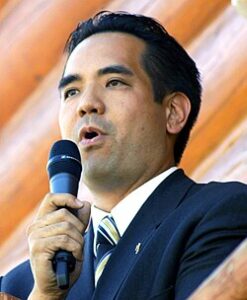Did you know that your engineering firm could qualify for the federal Research and Development (R&D) Tax Credit? The R&D tax credit is meant to incentivize companies to invest in innovation and technological investments so that the U.S. can remain on the forefront of those advancements. Two-thirds of U.S. states also offer tax credits for R&D activities.
There is a common misperception that R&D is limited to scientists or others working in laboratories, but that is not true—many design and development activities qualify, including those which create structural and mechanical systems. While the Tax Cuts and Jobs Act of 2017 made many changes to our tax code, it retained the current permanency of R&D credits, understanding the importance of U.S. investments towards innovation.
R&D Tax Credit Benefits
Many engineering firms may be unaware of the applicable tax benefits that come with federal and state R&D tax credits, but Engineered Tax Services can help. The R&D tax credit allows companies to take advantage of tax savings, increase cash flow, and stay competitive in the industry and marketplace. The credit, which is designed to reimburse companies that develop new products, processes, or inventions, offers a significant percentage back to the company for qualified research activities and qualified research expenses. These savings can offset wages and salaries paid for qualified activities. You do not need to be a large company to qualify.
Many of the qualifying activities are considered daily operations for the AEC industry. Engineering firms with a design-build team and engineers on staff will also likely qualify for this great incentive. The R&D tax credit can provide an immediate source of cash for qualifying firms from prior years, plus a significant reduction to current and future years’ federal and state tax liabilities.
View Our Video Below or Read on to Learn More About R&D Tax Credits for Engineers.
The Qualitative Four-Part Test for Qualifying R&D Research
A simple four-part test helps to determine which activities constitute qualified research according to criteria established by the IRS:
- Permitted Purpose: The activities must relate to new or improved business components, function, performance, reliability, and quality
- Technological in Nature: The activity performed must fundamentally rely on principles of physical or biological science, engineering, and computer science
- Elimination of Uncertainty: The activity must be intended to discover information to eliminate uncertainty concerning the capability, method or design for developing or improving a product or process.
- Process of Experimentation: The taxpayer must engage in an evaluative process that is capable of identifying and evaluating more than one alternative to achieve a result. This may include modeling, simulation or a systematic trial and error methodology.
Potentially Qualifying Activities for Engineers
- BIM Modeling – Designing a building collaboratively with one system of computer models
- Determining alternative structural design
- Improving or determining substitute heating and air conditioning systems
- Improving or developing substitute ventilation
- Developing or improving lighting
- Sustainable design
- New technologies
- Value engineering
- Development of substitute electricity conduction systems
- Space management to determine type and scale of facilities
- Design performance testing
- Development of alternative water flow/plumbing systems
- Integrating transport systems into the design of a structure
- New material testing – measurement of the characteristics and behavior of such substances
- Environmental design
- Environmental impact studies
- Incorporating waste disposal processes into the structure
- Finding solutions to technical challenges
R&D Tax Credit Study
Claiming R&D tax credits requires a fair amount of documentation required by the IRS. That’s why it’s important to seek professional help from a consultant with a strong expertise in helping architects successfully claim these valuable tax credits. Our R&D experts dig much deeper into the fundamentals of your business activities—incorporating operations, engineering, financial, and tax expertise that results in more credits and meticulous documentation that is necessary to support your activities, costs, and credit. There is a direct correlation between the amount of your defensible credit and the expertise of the advisor performing the tax credit study.
Learn More About R&D Tax Credits for Engineers
The R&D tax experts at Engineered Tax Services have helped companies of all sizes across the U.S. identify and qualify these expenditures and receive the tax benefits they have been missing. Our process begins with an R&D Tax Credit Qualification Analysis to make sure your company qualifies for the R&D tax credit.
To learn more about R&D tax credits for engineers, please complete the form on this page. For immediate questions about tax deductions for architects, call Engineered Tax Services at (800) 236-6519 or check out our R&D tax credit services for more information.





